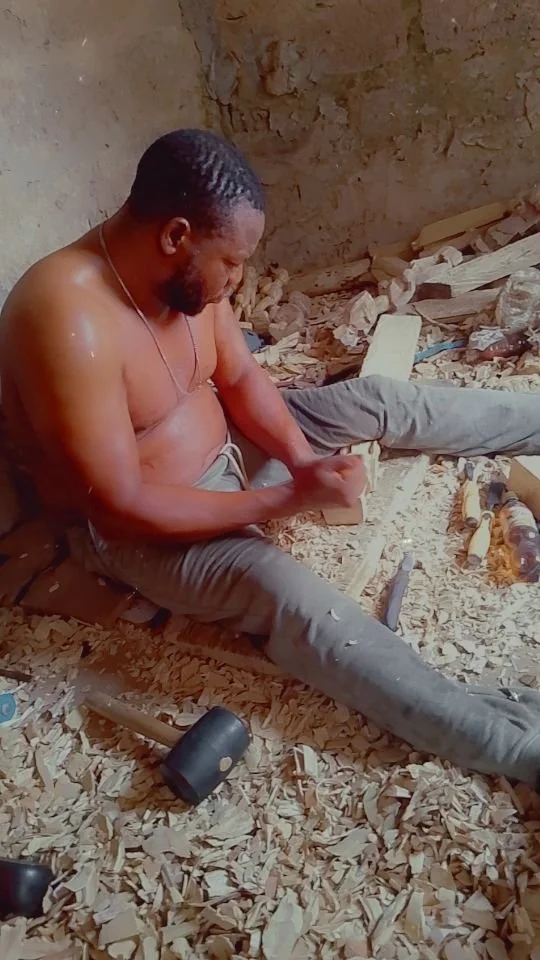Arowoogun Traditional Carvers
Preserving Five Generations of Carving Excellence
In the village of Osi-Ekiti, nestled in Yoruba land, wood carving is more than an art form—it’s a deeply rooted heritage that binds generations together. For the Arowoogun family, carving has been a hereditary craft for five generations, passed down from father to son. This tradition remains alive and thriving, with every male child in the family contributing to the legacy. The family’s mastery of carving empowers them to transform raw wood into pieces of cultural and spiritual significance, embodying the soul of Yoruba traditions.
The artistry of Arowoogun carvings unfolds in four meticulously honed stages, each reflecting centuries of refined techniques:
Ona lile: Blocking out the primary forms using an axe or adze, an ancient cutting tool dating back to the Stone Age.
Aletunle: Shaping the finer masses with an adze or chisel, revealing elements like ears, hands, and eyes.
Didan: Smoothing the forms with knives and chisels for an elegant finish.
Fifin: Adding sharp details such as intricate patterns, hair, and eyelids with a steady hand and a sharp knife.
Each stage illustrates the precision, patience, and skill the Arowoogun family has honed over generations.
For the Yoruba people, wood carving holds profound cultural and spiritual importance. The Arowoogun family creates sacred objects such as Agere (divination bowls), Ibeji figures, dance staffs, and masks like Egungun and Gelede. These carvings play pivotal roles in ceremonies, festivals, and rituals, serving as vessels for honoring ancestors, spirits, and deities.
Beyond its cultural purpose, wood carving offers a meditative process, connecting the carver to their environment and providing a sense of calm and focus. Carving helps get rid of stress, anxiety, and feelings of isolation. The patterns, textures, and craftsmanship of Yoruba woodwork create physical beauty and a bridge to ancestral knowledge and spiritual harmony.











